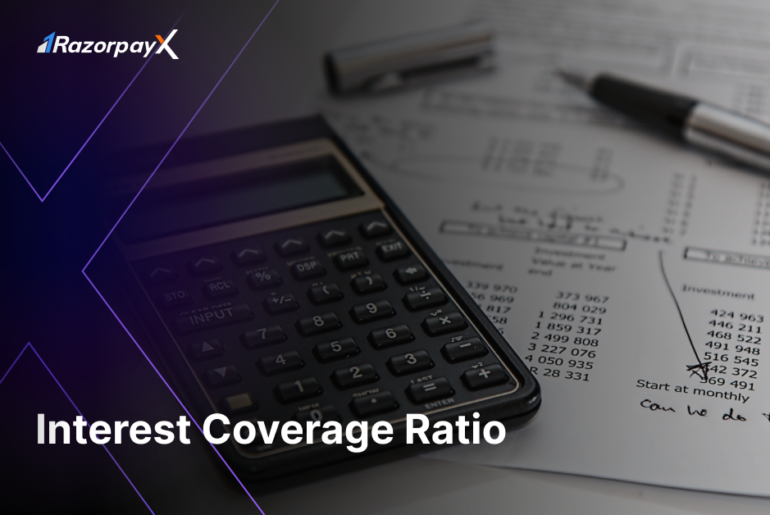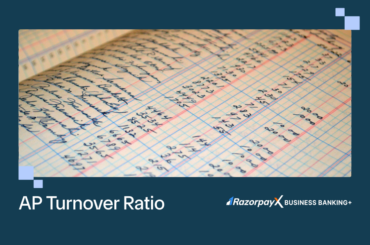Table of Contents
What is Interest Coverage Ratio?
The interest coverage ratio (ICR) is a financial metric that measures a company’s ability to pay its interest expenses. It is calculated by dividing the company’s earnings before interest and taxes (EBIT) by its interest expense.
A high ICR indicates that a company has a healthy financial position and is able to easily meet its interest obligations. A low ICR, on the other hand, may be a sign of financial difficulty.
Financial analysts and investors use the interest coverage ratio to understand a company’s ability to pay off the accumulated interest on debt. It is a powerful indicator of a company’s financial health and current debt burden.
Importance of ICR in Business
Why do businesses and lenders calculate the interest coverage ratio?
Creditworthiness: Companies borrow money from various financial institutions and other sources. These lenders need assurance that they’ll receive their payments with interest regularly. The ICR helps lenders understand whether the business will be able to make interest payments or not.
Financial health: Interest coverage ratio can be assessed to check the short-term financial health of a company. A consistently dropping ICR means that the business’s earnings are falling while its debt is increasing.
Business trends: Interest coverage ratio of previous years can be used for trend analysis to determine a company’s ability to repay interest.
Interest Coverage Ratio Formula
The formula for calculating ICR is as follows:
Interest coverage ratio = Earnings before interest and taxes / interest expense
- EBIT = Business’s operating profit
- Interest Expense = Total interest payable on all borrowings
Interpreting Interest Coverage Ratio
| Interest Coverage Ratio (ICR) | Interpretation |
|---|---|
| 1 or less | The company is struggling to meet its interest obligations and may be at risk of defaulting on its loans. |
| 1.5 to 2 | The company is in a healthy financial position and has sufficient funds to meet its interest obligations. |
| 2 or more | The company is in a very strong financial position and has more than enough funds to meet its interest obligations. |
Now, let’s check how the interest coverage ratio is interpreted by financial analysts and investors:
- High Interest Coverage Ratio
A high ICR value indicates that a company is financially strong and has sufficient funds to pay its interest obligations. An ICR of 1 indicates that the company needs to use its entire earnings to pay its interest on time. For a company to have sufficient earnings for interest payments, it needs to have an ICR of 1.5 or more.
- Low-Interest Coverage Ratio
A low-interest coverage ratio indicates that a company may not be able to able to manage its debts effectively. In other words, the company will need to use liquidate its assets to repay its loans.
Remember that if you come across an organisation that consistently exhibits a low-interest coverage ratio, it indicates the organisation is incapable of repayment.
Types of Interest Coverage Ratios
There are several ways to calculate the ICR of a company. Besides using EBIT, you can use other metrics like EBITDA, EBIAT, fixed charge and EBITDA minus capex.
- EBITDA Interest Coverage Ratio
EBITDA (earnings before interest, tax, depreciation and amortisation) coverage ratio helps determine how many times EBITDA can service the interest expense which is due.
- EBITDA Less Capex Interest Coverage Ratio
You can use this interest coverage ratio to check the number of times EBITDA can be used to service the interest expense after the deduction of capex.
- EBIAT Interest Coverage Ratio
Instead of using EBIT, you use earnings before interest after taxes. As companies must pay taxes, it provides a more realistic picture of a company’s capacity to pay interest on loans.
- Fixed Charge Coverage Ratio (FCCR)
FCCR measures the ability of a company to pay all of its short-term financial requirements. It can be adjusted to include rent expenses as well.
Limitations of Interest Coverage Ratio
While the ICR is a robust metric to determine creditworthiness and short-term financial health, there are a few limitations that must be kept in mind.
- It only considers a company’s current interest expenses. The ICR does not take into account future interest expenses, which could increase if the company takes on more debt or if interest rates rise.
- It does not consider a company’s cash flow. The ICR only considers a company’s earnings before interest and taxes (EBIT), which is not always a good indicator of a company’s cash flow. A company with a high ICR could still have difficulty meeting its interest obligations if it does not have enough cash flow.
- It is not adjusted for seasonality. The ICR can be affected by seasonal fluctuations in a company’s revenue and expenses. For example, a company that sells seasonal products may have a lower ICR in the off-season than in the peak season.
- It can be manipulated by companies. Companies can manipulate their ICR by taking on non-cash expenses, such as depreciation and amortisation. This can make the ICR look better than it actually is.
Despite these limitations, the ICR is a useful metric for assessing a company’s ability to pay its interest expenses. However, it should be used in conjunction with other financial metrics to get a more complete picture of a company’s financial health.
Read more: Accounting Ratio Analysis
Here are some other accounting ratios that can be used to assess a company’s financial health:
- Debt to equity ratio
- Debt to EBITDA ratio
- Cash flow to debt ratio
- EBITDA margin
- Return on equity (ROE)
Better Financial Management with RazorpayX
RazorpayX is helping India’s top businesses digitise their banking functions. Why do you need to digitise your business banking?
- Cut manual effort and mistakes with automated payouts, taxes and more
- A current account now directly integrated with your favourite accounting software
- Smart bulk payouts so you don’t have to worry about any missed payments
- Vendor management, payroll management – all in one place
- AI-driven financial insights with RazorpayX smart dashboard
Read more:
FAQs
What is a good interest coverage ratio?
An ICR of more than 1.5 is considered to be a good interest coverage ratio. There have been instances when lenders have asked for an ICR of 3. The ideal ICR depends greatly on the particular sector.
How to improve the interest coverage ratio?
There are mainly two ways by which you can increase the ICR of your company. The first way is by increasing the earnings before interest and tax (EBIT) which can be achieved once revenue is increased. The second way is by decreasing finance costs or interest expenses. This can be done through debt refinancing.
How to get the details of a company to calculate the interest coverage ratio?
Listed companies are required to publish their financial statements after every financial quarter and year. If you’re interested to check a company’s ICR, you can go through these financial statements to get the details for calculating this ratio.
Is there any limitation to the interest coverage ratio?
Using ICR alone will not help you compare two companies reliably especially if they belong to two different industries. Moreover, while calculating the interest coverage ratio, a company may not include all types of debt which might generate a skewed result.
What are the warnings signs of a declining interest coverage ratio?
The warning signs of a declining interest coverage ratio include decreased operating income, increased debt, increased interest expense, reduced profitability and lower credit ratings.





